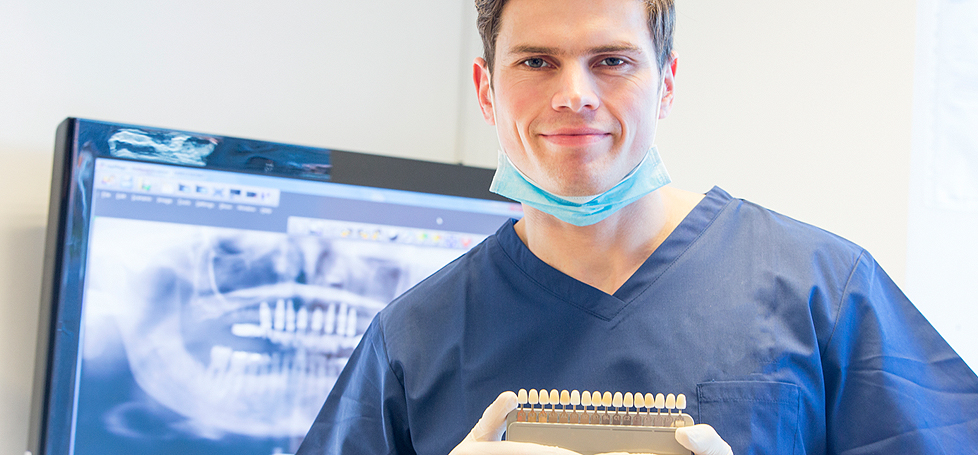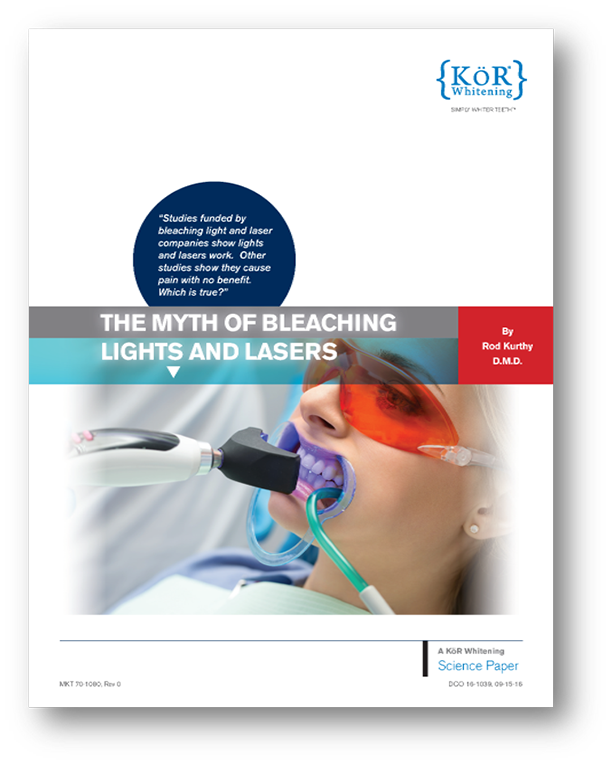Bleaching lights and lasers have been a major topic of discussion in the field of teeth whitening. Yes, they have generated a lot of excitement from consumers and even dentists. After all, lights and lasers sound a lot more interesting than whitening gels and trays. The manufacturers of these lights and lasers claim great whitening benefits, as well.
However, the real truth is that the science does not back up these bold claims. Clinical studies have clearly shown that bleaching lights and lasers provide no measurable whitening results. In addition, many dentists have discovered that using them increases the chances of acute discomfort felt by patients during and after the whitening procedures are performed.
It’s important to understand the science behind teeth whitening and the harsh fact that bleaching lights and lasers are simply not effective.
Here’s the Science
If the breakdown of hydrogen peroxide were an endothermic reaction, then using photon energy from lights and lasers may have success. Unfortunately, the breakdown of hydrogen peroxide is not an endothermic reaction. Instead, it is actually an exothermic reaction.
Exothermic reactions require the release of energy for the reaction to proceed. Chemical reactants are added together to produce a reaction. Then energy (usually heat) is released as the reaction proceeds.
Heat or photon energy is incapable of providing acceleration of the reaction during an in-office whitening. This is important because an exothermic reaction, such as the breakdown of hydrogen peroxide, must be allowed to give off energy during the reaction. According to Le Chatelier’s Principle of Chemical Equilibrium, forcing more energy into an exothermic reaction throughout the process may disrupt the reaction. That is why chemical activation is the preferred method to provide a continuous breakdown of hydrogen peroxide. Unlike lights and lasers, it is scientifically proven to improve the teeth whitening results.
Given this information, it makes you wonder why companies who instruct the use of their bleaching lights or lasers also include chemical activators in their whitening gels. If they really believe lights and lasers work, why would they still feel the need to add chemical activation?
“KöR Whitening puts the science of teeth whitening to work for you with the most effective gels and treatment systems available.”
Sensitivity Studies
Multiple clinical studies have also shown the science behind increased discomfort felt by patients receiving whitening treatments that utilize bleaching lights and lasers. Three scenarios have been tested:
- Lights and lasers with no whitening gel applied.
- Whitening gel applied with no use of lights or lasers.
- Combining whitening gel with the use of lights or lasers.
Use of lights and lasers alone, with no whitening gel, resulted in zero sensitivity.
Combining the use of high concentration whitening gel with lights or lasers resulted in far more frequent and far more intense sensitivity and pain than the use of the same whitening gels without lights or lasers.
It was long believed that acute sensitivity experienced by patients during and after in-office whitening procedures utilizing bleaching lights and lasers was due to dehydration and/or heat caused by the lights and lasers. More recent studies have proven this to be false. As it turns out, the combination of high concentration peroxide and photon energy (lights & lasers) causes pulpal neurons to secrete Substance P, a powerful neurotransmitter, resulting in the acute pulpal inflammation and pain that we see.

Get Real Results with KöR® Whitening
Don’t be fooled by the lofty claims of bleaching light and laser manufacturers. Whitening gels are the most effective when combined with a chemical catalyst for an accelerated hydrogen peroxide breakdown. KöR Whitening puts the science of teeth whitening to work for you with the most effective gels and treatment systems available.
For information about KöR Whitening products, contact us today.



